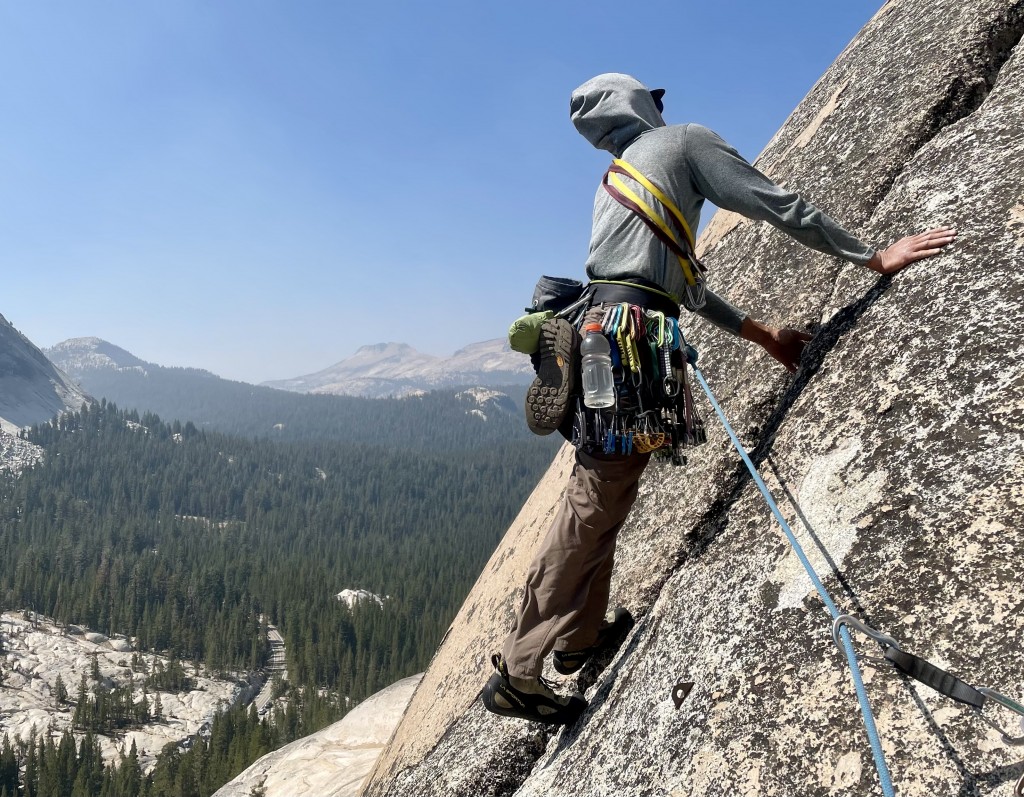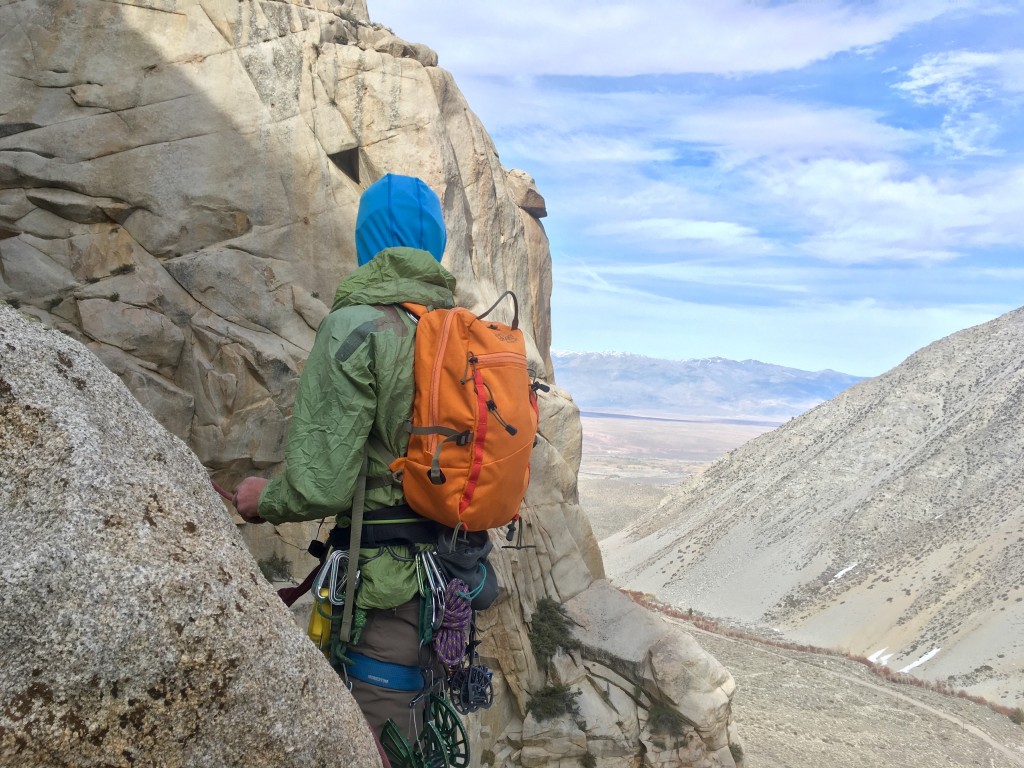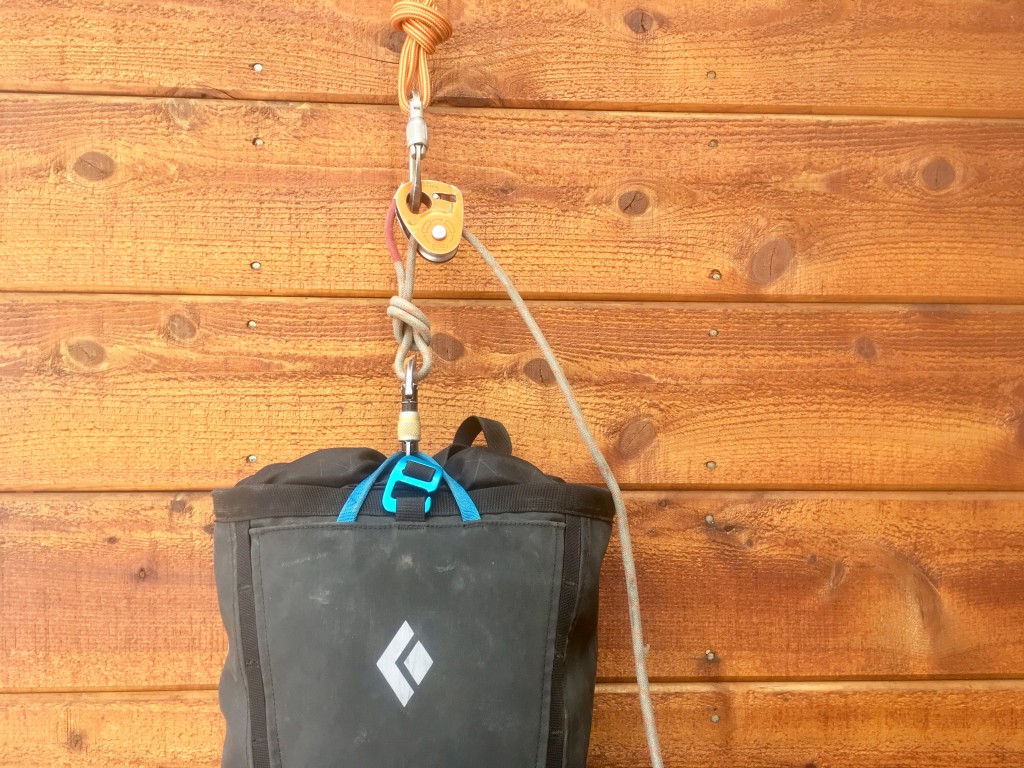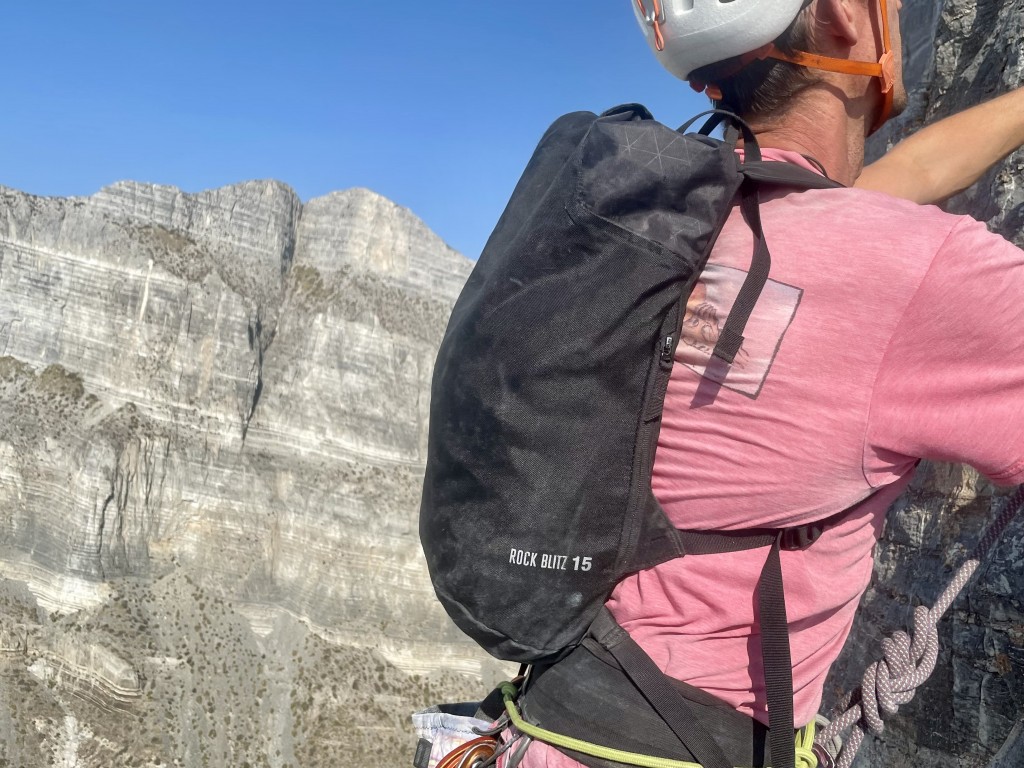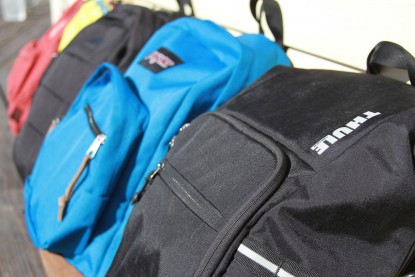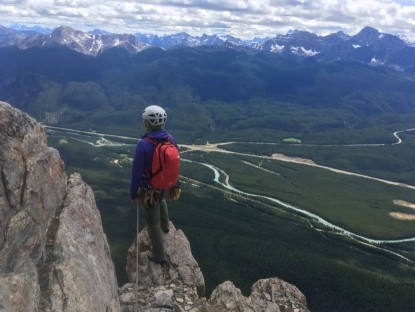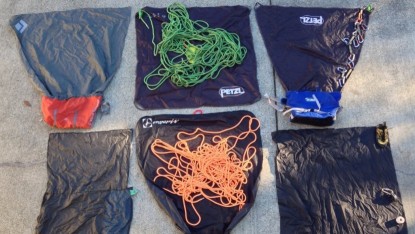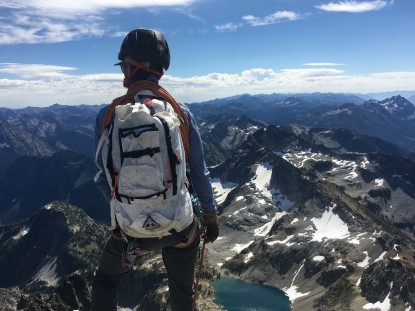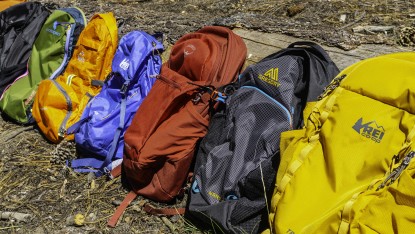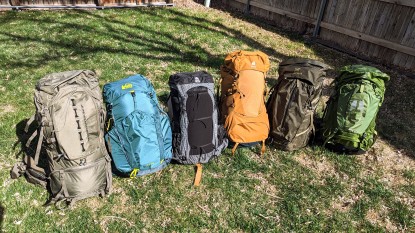How do you figure out which small climbing pack is best for you? We looked into popular options and examined the best, stitch by stitch, during our testing period. Read on to determine which of our picks are best for the kind of climbing you do.
Why Do You Need a Rock Climbing Daypack?
It wasn't long after the first ascent of Mont Blanc in 1786 that climbers started looking for a comfortable and efficient way to carry their stuff. Over two hundred years later — after technical rock climbing had grown into a sport separate from mountaineering — packs explicitly designed for multi-pitch rock climbing appeared. At first, these were simple bags sewn with sturdy fabrics. Today that's still mostly true, except materials are stronger, weights are lower, and a few convenience features are included.
When looking to carry gear for a day in the vertical, you need a pack that's reliable and not too annoying to climb with. For most climbers, these will be worn for day trip ascents of multi-pitch classics. The pack needs to be able to store things like water, snacks, layers, headlamp, phone, and perhaps shoes for a carry-over descent. There are thousands of backpacks that could do that job. We focus on products designed specifically for climbing.
Rock Climbing Backpack Options
No Pack
As climbers gain more skill and experience with multi-pitch routes, they'll naturally move faster. It's possible to carry some of the contents of a pack on your person. A light jacket can be knotted around the waist or stuffed into its own pocket, a water bottle and shoes can be clipped to your harness, and food and a headlamp fit inside pockets. Each climber needs to make their own decisions regarding gear and route selection based on an honest assessment of their ability and the conditions. For steeper climbs done quickly, the ease of climbing with no pack can be worth the sacrificed storage capacity.
Hydration Packs
If you prefer long, face climbing routes in stable weather, a hydration pack might be superior to a rock climbing-specific daypack. Our favorite hydration packs are more compact than climbing daypacks and sport a narrower profile that makes them more comfortable to climb with. However, they're usually too small for much beyond a hydration reservoir and a granola bar. They're also usually built for running, hiking, or mountain biking, not for the punishment that rock climbing can dish out. Still, we like hydration packs on sunny, strenuous routes when we want a bunch of water but don't want the burden of a full-fledged backpack.
Rock Climbing Specific Daypacks
This is the style of pack we highlight in our review. They're small (12 - 20L) and designed to ride high on the back so they won't interfere with a harness. They're also tougher than the average backpack, like the Mystery Ranch Skyline 17, sewn with thicker fabrics to resist abrasion. Many of these packs have some removable parts that let you customize them for your preferences and objectives. The best designs also include strong anchor points for occasional hauling. A top-rated hiking daypack can also work for the climber who rarely climbs long routes, but you will sacrifice some durability.
Mini Haul Bags
Another option for tackling strenuous routes is to take your pack off and haul it. This can be the best strategy for success on routes with sustained, difficult climbing. Using a thin static tag line and a progress capture pulley to haul a small (sub 30 pound) load is no big deal for folks who can keep their belay stations efficient and organized. Options available include the Black Diamond Stubby, Metolius Mescalito, and Black Diamond Creek 20. Larger options are, of course, also available.
Alpine and Mountaineering Packs
As altitude increases and temperatures plummet, climbers bring extra gear and clothing to stay safe and comfortable. Climbing with a pack is common on alpine routes for these reasons and because alpine terrain, which is often less steep and sustained, makes wearing one less annoying.
Alpine packs can be lighter because abrasion is less of a concern in snowy and icy environments. They're usually also larger to accommodate more clothing and gear. Of the models currently in our climbing daypack review, only the Arc'teryx Alpha AR 20 and Black Diamond Blitz 20 are designed specifically for alpine climbing, though others can be pressed into service. Interested mountaineers should check out our review of mountaineering and alpine climbing backpacks.
Considerations for Rock Climbing Specific Daypacks
Capacity
After you've decided you need a rock climbing backpack, the next question is: what size? Our test fleet ranges from 12 to 20 liters. Smaller, and the contents could fit on your harness, much larger, and it can be unpleasant to climb with.
If your rope team needs more gear than a single pack can hold, it's better to add a second pack for the leader instead of punishing the follower with an even heavier load. The models in our test will work for leading or following. We recommend keeping the leader's pack lighter than the follower's whenever possible. Depending on the route and amount of gear required, it can sometimes be better to pair a rock climbing-specific pack for the follower with a lighter hydration pack for the leader.
Weight vs. Durability
When selecting a climbing pack, the most significant consideration should be the type of climbing you intend to do. Bolted face routes and sustained chimney climbs place different demands on a pack. Climbers who clip bolts exclusively or tradsters who abhor awkward wideness can sacrifice durability to enjoy a lighter load with a daypack like the REI Flash 18. First ascensionists, climbing guides, and adventure climbers need more abrasion resistance and are better off with a tougher bag, like the Black Diamond Creek 20.
Packed Size (Streamlined vs. Junk Show)
Almost every single pack has a few options for attaching a rope or big cam to the outside; the one exception is the sleek exterior of the Black Diamond Bullet. However, having a yard sale of water bottles, helmets, big cams, and extra layers dangling from the outside of your pack is problematic on the approach and dangerous on the climb. Be sure that gear attached to the outside is secure and not flopping around.
Our testing team strongly recommends that climbers pack as much of their kit inside the pack as possible. However, no rock climbing daypack can accommodate the bulk of a rope or #6 Camalot inside without leaving everything else out. How often will you be strapping things to the outside? Examine each pack's attachment options. Some require more improvisation than others.
Features
Haul Points
Beyond the larger considerations, there are a few other features that differentiate these packs. Chimneys and hard crux pitches can call for hauling a pack. The Mountain Hardwear Multi-Pitch 20 has two sturdy loops designed for this job, as do the Creek 20 and the Skyline 17. The single haul loop found on other packs will be sufficient for most climbers most of the time. It's possible to rig these packs with more haul points using the shoulder straps or other attachment points, a sling, and a little creativity.
Hip belts
Eleven of the packs we tested have removable hip belts; usually an unpadded piece of skinny webbing. The OR Payload 18 has no hip belt at all, and the Petzl Bug comes with it permanently attached. Many of our testers want a hip belt some — but not all — of the time. Unless you know your hip belt preference, we suggest you choose an option with one you can remove and experiment for yourself.
Emergency Whistles
The final feature we wish was included on all rock climbing daypacks is a safety whistle. Whistles are light and small and can be a useful signaling device in an emergency. Six of the packs we used incorporate a whistle into the buckle of the sternum strap. The other models in the test should include this low-cost feature.
Fit
Though it's a paramount consideration, fit varies greatly from climber to climber, and no online review can tell you how a pack will fit your body. Try packs on at your local climbing shop if at all possible. Some online retailers have generous return policies that can help. It's important that your choice is tuned into your back length. The bottom of the pack should ride above your hips. If it's too long, it will obstruct access to the rear gear loops on your harness, or the back of your helmet will hit the top of the pack when you look up.
Value
The last decision to make is how much you're willing to spend. Premium packs can cost well over $80, which might be more than occasional multi-pitchers are willing to spend. It's entirely possible to climb comfortably with the many less expensive, non-sport-specific packs out there. The reverse is also true; most of our tester packs work well on a day hike, mountain bike ride, or day at the ski area. If you don't plan to haul or climb many long routes in the first place, then the added durability and features of the nicer packs may not be worth it.


